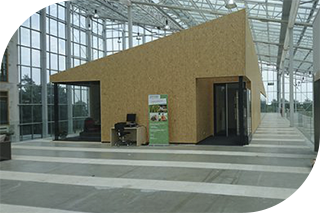Pharma

Brightlabs is the laboratory for all analytical matters for the pharmaceutical industry. It is our mission to help our customers with their pharmaceutical development projects and QC tests. For this, Brightlabs offers a broad scale of physical, chemical, and micro biological analyses, from resource analysis in conformity to the pharmacopoeia, purity of a drug-substance, to QC analysis of drug-products. We closely work together via co-creation to achieve quick and efficient successes.
Brightlabs has ample experience with the development of various class compounds, including complex chiral compounds.
A method development is executed step by step, from the simple ‘proof of principle’ to the full method validation conforming to ICH regulations. Parameters that can be tested are:
- Accuracy
- Precision
- Specificity
- LOD/LOQ
- Linearity
- Range
- Robustness and stability in solution
- Forced Degradation
- European Pharmacopoeia (EP)
- United States Pharmacopeia/National Formulary (USP/NF)
- British Pharmacopoeia (BP)
Brightlabs also offers the testing on finished drug products and API’s, according to different monographs or customer specific requirements.
This includes complete analysis like identity, assay, impurities, elemental impurities, residual solvents, particle size, dissolution testing, friability, hardness, content uniformity and many more.
All is done under Good Manufacturing Practices and with full QA support.
The stability programme also encompasses the product related factors that could influence the quality (e.g. interaction of DP with additives and packaging materials).
Brightlabs has various climate rooms where stability studies can be conducted in conformity with the ICH regulations, such as;
- – 20 ± 3 °C (Frozen)
- 5 ± 3 °C (Refrigerated, Accelerated Frozen)
- 25 ± 2 °C / 60 ± 5 % RH (ICH Zone II, Accelerated Refrigerated)
- 30 ± 2 °C / 65 ± 5 % RH (ICH Zone IVa, Intermediate)
- 30 ± 2 °C / 75 ± 5 % RH (ICH Zone IVb)
- 40 ± 2 °C / 75 ± 5 % RH (Accelerated Ambient)
Elemental Impurities
The measuring of very low concentration elemental impurities is usually a mandatory part, described in ICH-Q3D and <232-233>.
Possible contaminations in drug-products can originate from used materials and catalysts. With fillers they can occur as natural contaminations. Brightlabs had validated methods available to properly analyse the strict standards.
Nitrosamines
Brightlabs has developed an internal method (GC-MS/MS) for the measuring of Nitrosamines.
Depending on the matrix measurements can be made on a concentration of 10 ppb.
The current methods contain the following nitrosamines:
- N-nitrosodimethylamine (NDMA)
- N-nitrosomethylethylamine (NMEA)
- N-nitrosodiethylamine (NDEA)
- N-nitroso-di-n-propylamine (NDPA)
- N-nitrosomorpholine (NMOR)
- N-nitrosopyrollidine (NPYR)
- N-nitrosopiperidine (NPIP)
- N-nitrosodi-n-butylamine (NDBA)
Residual Solvents
Brightlabs has a standard headspace method for the analysis of residual solvents, such as described in Ph. Eur 5.4.
Pharmaceutical products have traces of volatile organic substances that are used during the production of medicines and remain afterwards. The presence of residual solvents has to be carefully monitored and limited, because even traces of these solvents could influence the safety and efficacy of medication.
With our method we can analyse practically all class 2 & 3 for the mentioned limits in the Ph.Eur. For the remaining volatile organic substances, or customer specific substances, please contact us for the possibilities.
Brightlabs offers microbiological tests and validations in conformity with Ph.Eur 2.6.12 & 2.6.13
Contact
Questions? Please feel free to contact us.
+31 (0)77 77 03 374

